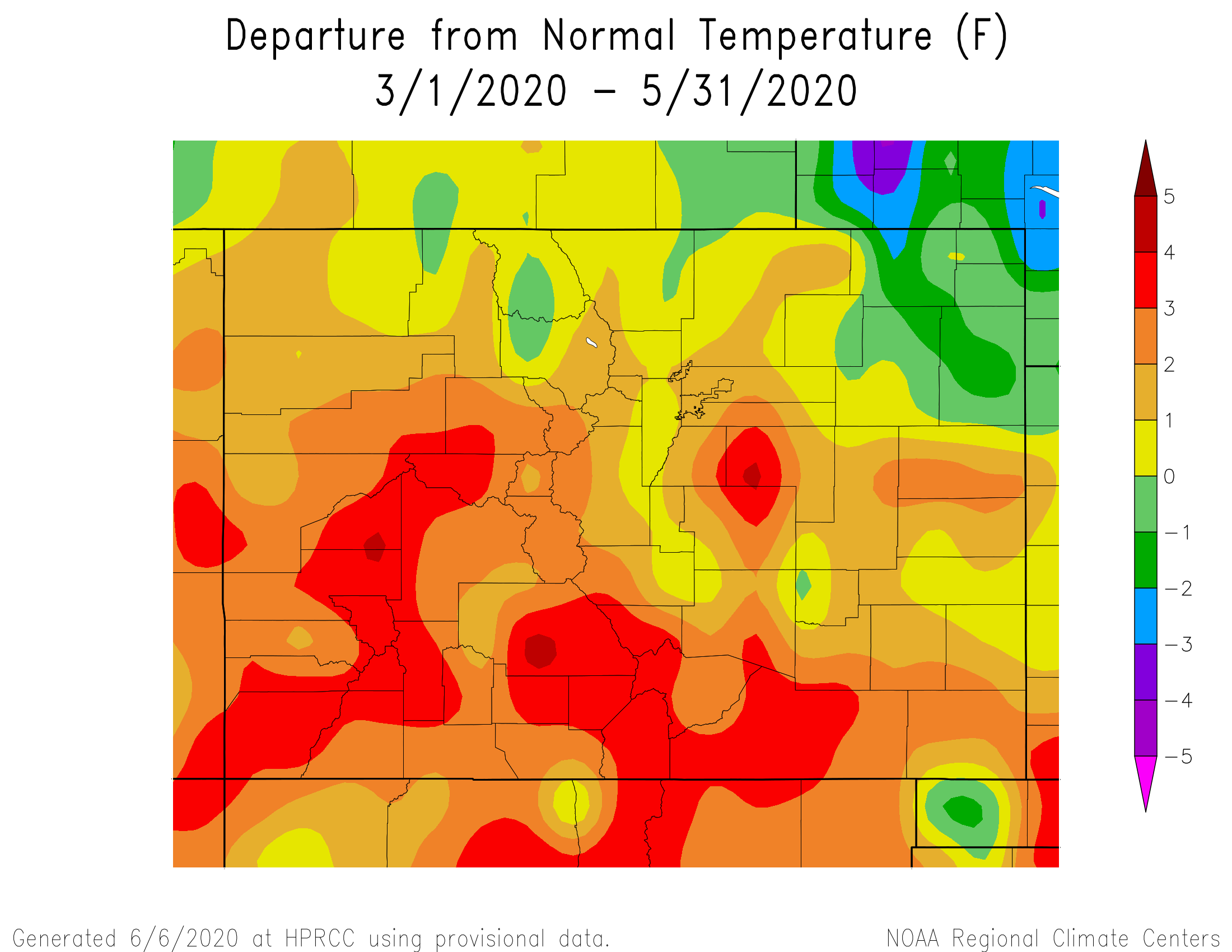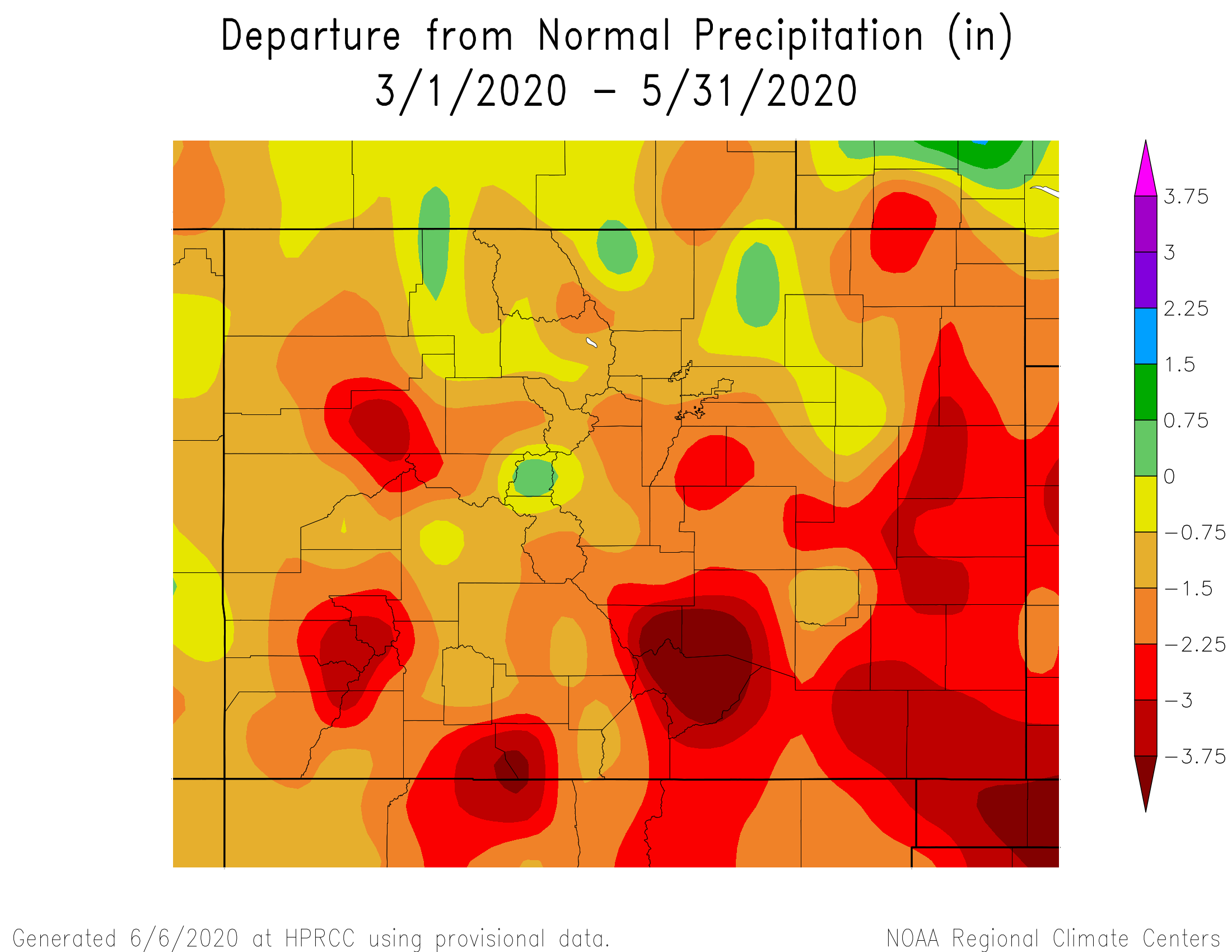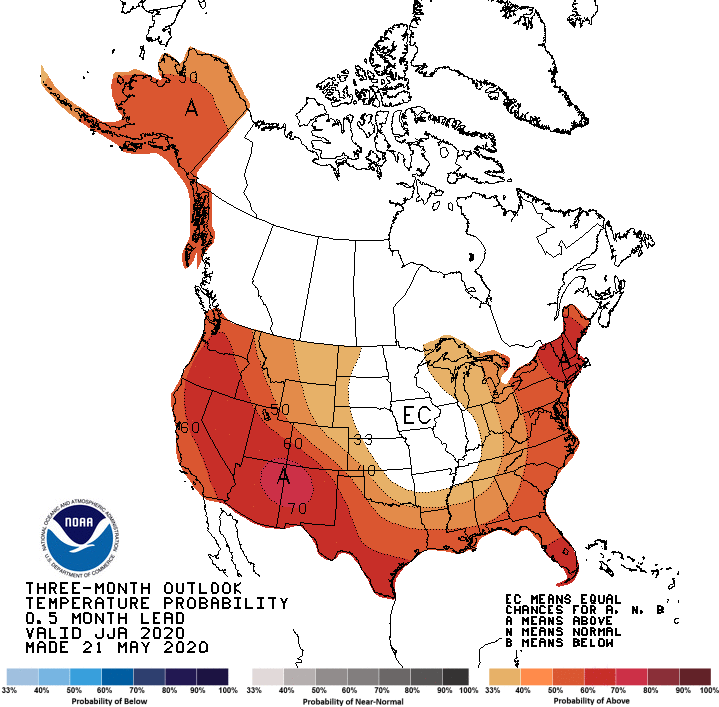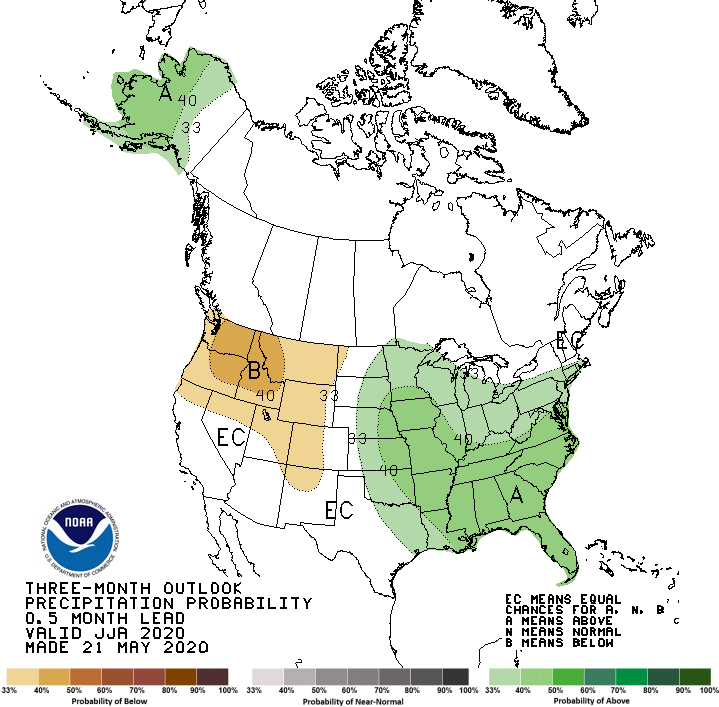Meteorological Spring 2020 (March, April and May) started out like a "lion" as a passing weather system brought rain and snow to portions of south central and southeast Colorado through the first two days of March. A few more weather systems moved across the Rockies through the rest of the month, bringing scattered precipitation which favored western and northern portions of the state. March, however, ended like a "lamb" with warm and dry conditions recorded across all of south central and southeast Colorado. April of 2020 brought periods of warm and dry conditions, as well as periods of cold and wet conditions to northern and eastern portions of Colorado through the first half of the month, while warm and mainly dry conditions prevailed across southwestern portions of the state. Warm and relatively dry conditions prevailed across the area through the rest of the month, with record breaking heat experienced over portions of south central and southeast Colorado through the last week of April. May of 2020 was a roller coaster type of month across south central and southeast Colorado, with periods of warm and dry conditions followed by periods of cool and wet conditions, as a few weather systems moved across the state. However, for the month of May as a whole, above to well above normal temperatures and below to well below normal precipitation was experienced across most of south central and southeast Colorado
For the Spring of 2020 as a whole, generally above to well above normal temperatures and below to well below normal precipitation were experienced across south central and southeast Colorado. The following graphics indicate seasonal temperature and precipitation departures from normal across the state for the Spring of 2020.
 |
 |
The preliminary average temperature for the Spring of 2020 in Colorado Springs was 49.8 degrees. This is 2.6 degrees above normal and makes the Spring of 2020, tied with the Spring of 1963, as the 10th warmest Spring on record. This remains well behind the warmest Spring on record, 2012, when the average Spring temperature was 53.4 degrees in Colorado Springs. Colorado Springs recorded 3.00 inches of precipitation through the Spring, which is 1.45 inches below normal. Colorado Springs recorded 17.1 inches of snow through the Spring, which is 3.4 inches above normal. This brings the 2019-2020 seasonal snowfall in Colorado Springs to 56.4 inches. This is 18.7 inches above normal to date, and makes the 2019-2020 snow season the 15th snowiest on record in Colorado Springs.
(click here for a more detailed Spring of 2020 Climate Summary in Colorado Springs)
The preliminary average temperature for the Spring of 2020 in Pueblo was 54.0 degrees. This is 2.9 degrees above normal and makes the Spring of 2020, tied with the Spring of 1963, as the 10th warmest Spring on record. This remains well behind the warmest Spring on record, 1981, when the average Spring temperature was 55.8 degrees in Pueblo. Pueblo recorded 0.70 inches of precipitation through the Spring. This is 3.14 inches below normal and makes the Spring of 2020 the 4th driest Spring on record. This remains behind the driest Spring, 2002, when only 0.42 inches of precipitation was recorded in Pueblo. Pueblo recorded 3.9 inches of snow through the Spring, which is 6.1 inches below normal. This brings the 2019-2020 seasonal snowfall in Pueblo to 36.2 inches. This is 4.4 inches above normal to date, and makes the 2019-2020 snow season the 32nd snowiest on record in Pueblo.
(click here for a more detailed Spring of 2020 Climate Summary in Pueblo)
***data for the Spring of 2020 in Alamosa is still being verified and not included at this time***
Below is the Climate Prediction Center's (CPC) temperature and precipitation outlook for the Summer of 2020 (June, July and August), which indicates better chances of above normal temperatures and equal chances of above, below and near normal precipitation across south central and southeast Colorado, save for a slight tilt to below normal precipitation for portions of south central Colorado.
 |
 |